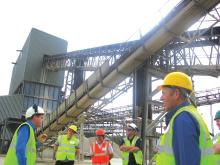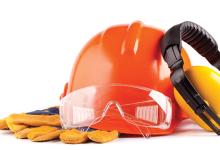
Safety, and the need to improve it, is a topic that comes up again and again in the European quarry industry - and rightly so. Safety is something that needs continual action in order to maintain the advances already made in the drive to reach target zero. But what exactly have you personally done recently to pass on this safety message?
It is the responsibility of everyone in this sector to point out potential problems before they endanger someone's livelihood, or even life. This does not have to mean making big changes - just simple steps can help prevent accidents.
Europe is generally considered a developed part of the world but the difference in safety standards I have witnessed first hand across the region varies greatly. Sometimes I have visited quarries where putting my steel toe-capped boots on before stepping out of the office is considered an insult because I am implying that the site is not safe. Yet when I visit others, emails and phone calls are exchanged in the days leading up to the visit to ensure I have the right equipment, and if not, then what size do I need.
Many multinational quarry operators are trying to develop the same high level of safety standards across all of their sites, no matter what the local standards are. During my visit to
However, Europe is not a level playing field when it comes to safety legislation - some countries, such as the UK and Germany, have much stricter regulations than elsewhere. This was evident when, following publication of an image in a recent issue of ABE, I was contacted by several people about the lack of edge protection in the quarry in question. Such operations would not be legal in the countries where the people commenting on the image live and work but in the country where the image was taken, the quarry is operating within all the local legislation.
This brings me back to everyone taking responsibility for safety - we all need to communicate what actually constitutes best practice. Some people commented that it wasn't right for me to publish the image in the magazine because compared to their standards it was unsafe but surely it is better to present a 'real world' image of the European quarrying industry, rather than a 'rose tinted' view that everywhere is operating to the highest safety standards? The image highlights that as an industry we need to actively promote safe practices on our sites but also lobby for improved safety legislation across the region.
Nonetheless, as the








